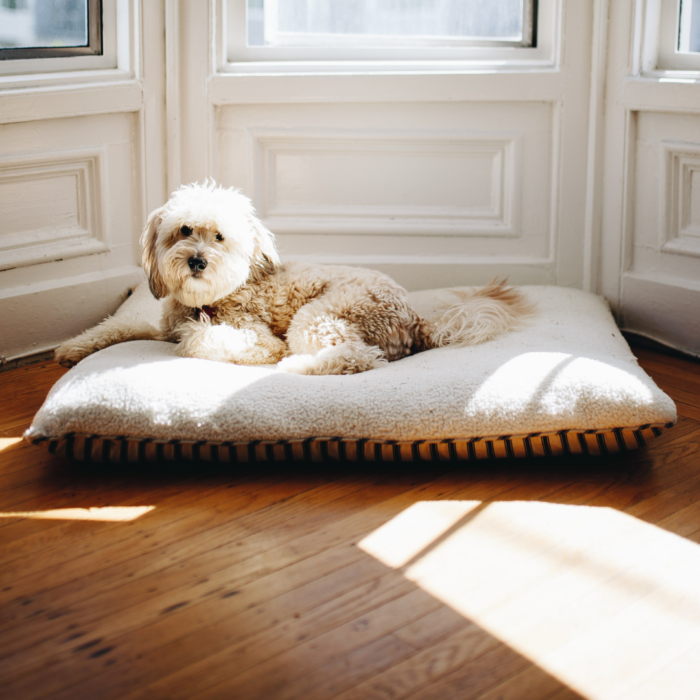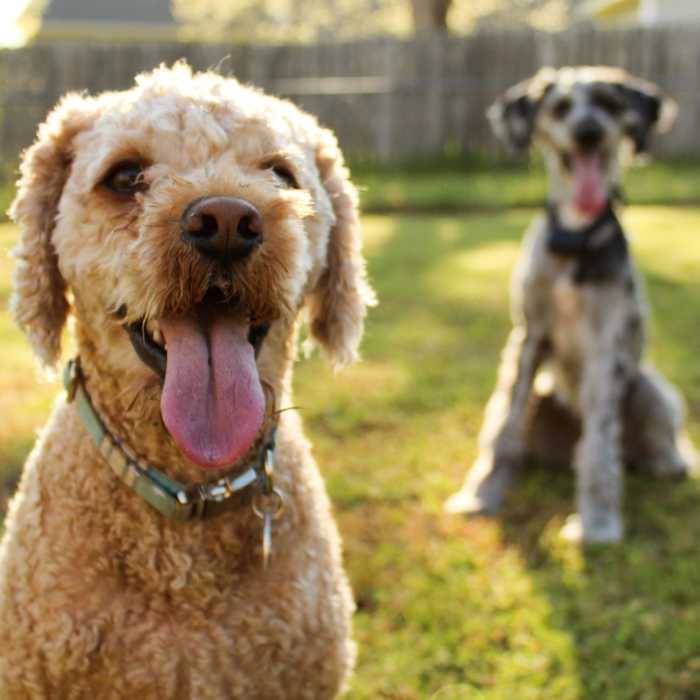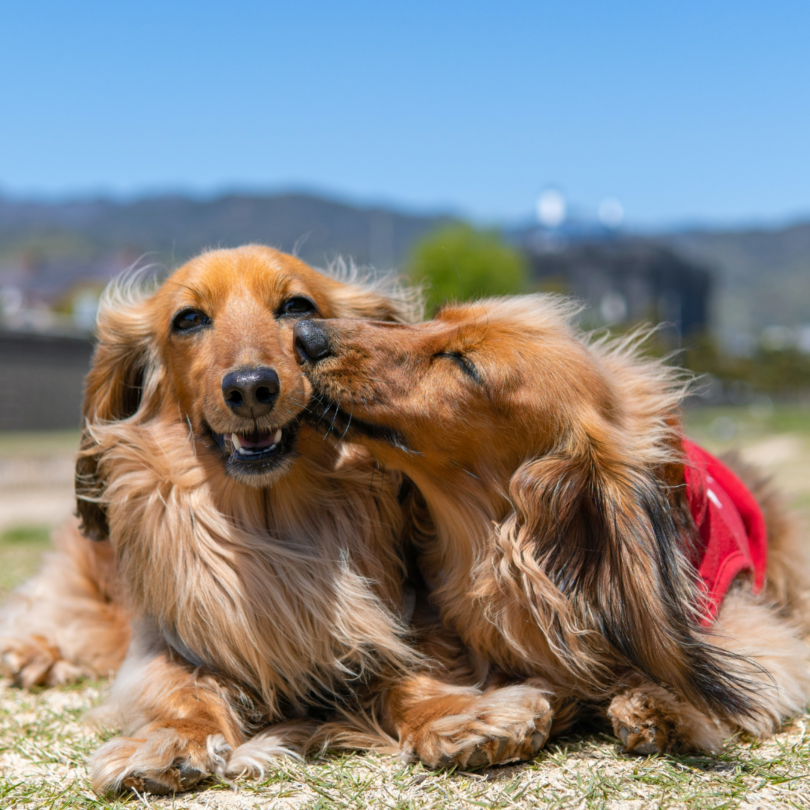In episode 49 of the Paws & Reward Podcast, Sarah Stremming and I will be talking about the necessary strategies used to strengthen and maintain a healthy relationship between dogs in your home. Some of the topics we discuss involve proactive management strategies to prevent inter-household aggression, ways to increase your observation skills, and skills to teach your dogs to achieve household harmony. Sarah Stemming is the owner of The Cognitive Canine and podcast host of Cog-Dog Radio. Watch our conversation on my YouTube Channel.
How do we know if we need to build a strong relationship between dogs?
Looking at how your dogs react when one of them is given attention or affection can clue you into how they are feeling toward one another. If one dog seeks attention and the other(s) deliberately try to distract you or insert themselves between you two, then it’s recommended that some relationship work needs to be done to soothe the possible growing tension.
Another clue would be any kind of tension around resources like food, treats, toys, or rest areas.
This can look like:
- the dog moving their toy/treat away from the other dog
- shifting their body away
- staring, freezing, or removing themselves from the other dog
- or more obvious communication might include threat displays, such as, growling, snarling, lip lifting, and/or snapping
If there are any threat displays, then we’ve crossed over into a higher-risk area that might require a professional to help modify these issues before they escalate.

What are some behaviors that can help maintain a healthy relationship between dogs?
- Separation from you during normal daily tasks
- Stationing (going to their individual restful places like a bed or mat and staying in a relaxed state)
- Increasing your communication and their skills overall, such as:
- Sit, Down, and Stay
- Leash manners
- Recall
These behaviors are essential if you need to move one dog away from the other or separate them, they are able to respond without any bodily manipulation. If two or more dogs are having a tense moment, being able to call them away from the situation is safer than placing your body in the middle of the conflict.

The relationship between dogs can be fragile at times. Tension can grow “quietly”. There can be subtle body language cues, that we often miss, indicating that one dog is uncomfortable having the other dog nearby while eating meals or high-value chews. Separating your dogs during mealtimes and while they are given a chewie or special treats prevents unwanted behaviors and tension between dogs. Even if there has never been an issue in the past, things can escalate quickly.
Being proactive and preventing things from having a chance to escalate is essential to maintaining a positive relationship between dogs.

How to Spend Deliberate Low-Risk/Low-Intensity Time with Your Dogs
Relax together with zero chance of escalation, like sitting and doing nothing while in the same space.
This is important because it shows the dogs that coexisting can be as simple as being in the same room rather than spending high-energy activities together at all times.
Low-intensity times are ideal after physical exercise for all the dogs in the household. Other barriers like an ex-pen or crates might be needed if the dogs continuously engage in play or rough-housing while in the same room.
Our dog’s relationship with one another can change over time as they age and grow. Maintaining their relationship means being observant of their behavior and staying proactive. If things escalate, contact a behavior professional for further help.

